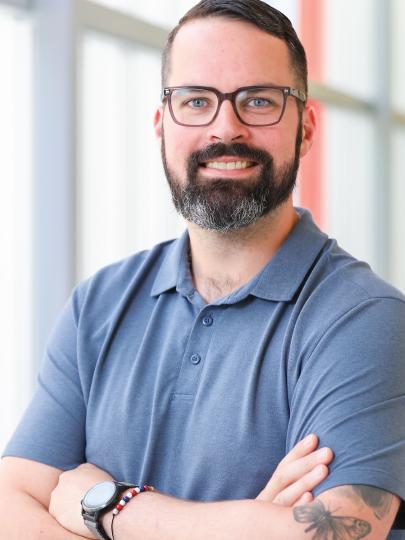In the Thick of It
Dr. Ron Walls had rehearsed his hospital’s response to disaster 73 times since 2006. But when his cell and office phones began ringing just after 3:00 pm on April 15, the BC native discovered just how valuable those drills were.
It was as if every vehicle with a siren turned its siren on and started moving at the same time.
Ten minutes earlier, eight seconds apart, two bombs had exploded at the finish line of the Boston Marathon. They killed three people and injured more than 175. Victims were headed to Brigham and Women’s Hospital, where Walls, former head of the Division of Emergency Medicine at UBC, is now chairman of the emergency department.
Seconds after he’d hung up and read a banner report of the bombing that slid across his cell phone, Walls, 58, heard the wailing. “I’ve never heard anything like it,” he says. “It was as if every vehicle with a siren turned its siren on and started moving at the same time.” Brigham’s emergency department is a block from Walls’ office. He started up the hill towards it.
At the bomb site, paramedics triaged patients, coordinating care and dispatching the injured to Boston’s five level-one trauma centres, including Brigham. As Walls reached the ER, the ambulances began pulling up. His first job as coordinator of response was to clear the existing patients. Simultaneously, he began preparing capacity in the hospital’s 42 operating rooms and assembling 10 trauma teams.
Within the next hour, 28 patients arrived. Many had severe blast wounds to their lower bodies and partial amputations. Others had shrapnel wounds – including a penetrating neck injury that threatened the patient’s ability to breathe – a head injury, blown ear drums, smoke inhalation, and burns. The most serious injuries were life-threatening. All were life-changing.
"Explosion at the finish line. We are OK but Boston is a mess right now."
“We had patients with... large pieces of their muscle and skin and bone missing from the blast,” says Walls. “Very bad fractures – the type of fracture you can only get with a tremendous amount of force.”Three more patients arrived subsequently. Nine of the patients needed immediate surgery. Walls had seven operating rooms and surgical teams ready within minutes.
At 3:25, in the thick of Brigham’s response, Alexa Walls texted her father. Unbeknownst to him, 24-year-old Alexa and her boyfriend had spent the Patriot’s Day holiday watching the marathon runners cross the finish line. “Explosion at the finish line. We are OK but Boston is a mess right now,” Alexa texted. Walls was alarmed but relieved she had survived. Later, both his sons – one a medical student in the city, the other in New York – sent reassuring messages of encouragement. His wife, Barbara, who’s a nurse, also texted to offer support.
At the peak of the incident, Walls had another five trauma teams gowned and ready. He knew the hospital could become a secondary target, or another bomb could explode and send more casualties through their door. During a city-wide drill in 2010 dubbed Operation Falcon, Walls had rehearsed that exact scenario: the explosion of a bomb during a mass gathering. On the day the drill became reality, Walls moved amidst the controlled chaos of medical personnel, paramedics and police officers.
The less injured were overcome with survivor’s guilt.
As he circulated, he reassured patients. “The most severely injured patients were very traumatized by this, as you would expect,” he says. “But also very stoic. They were remarkably brave, given that they were ordinary people to whom something truly extraordinary has happened.” The less injured were overcome with survivor’s guilt. They worried they were taking up space for those more seriously hurt. “They knew they were not badly injured, and they had seen people’s limbs come off, they had seen all the blood,” Walls says. “They were saying ‘I’m so lucky’ – because they saw what happened to people who weren’t lucky.”
All told, Brigham and Women’s treated 31 patients aged 16 to 65. Not a single patient who made it to hospital alive died, Walls reports at press time. He attributes that to the spectators who staunched wounds and paramedics who applied tourniquets at the bomb site, as well as to the emergency physicians, nurses, trauma surgeons, physicians’ assistants, housekeepers, orderlies and other hospital staff. “That was the power of teamwork – real teamwork that actually works,” he says. Walls’ take-home message is the responsibility every hospital owes the public to be ready by participating in drills, no matter how complicated or disruptive.
He is grappling with the memories of the nails and metal pellets his surgeons dug out of patients’ bodies. “We are always prepared to take care of people who have suffered from some freak thing, a lightning strike or an earthquake. But this was deliberate, and it didn’t have to happen.”






























